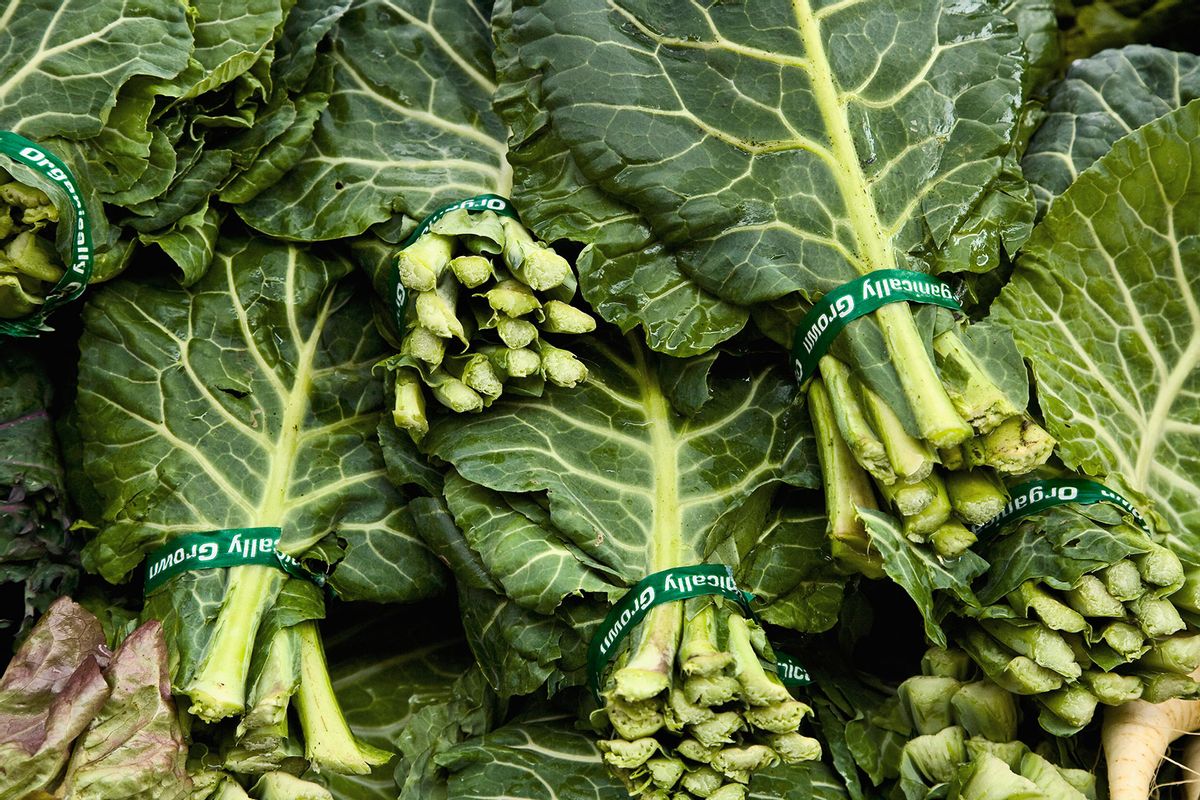You love collard greens, but did you know there are so many varieties to love? And so many ways to love them? Like many vegetables, collards are mostly sold as just plain "collards" at the grocery store, with no mention of what kind — and there are very few varieties commercially available. But there are so many more varieties than the ones you know. If you can name more than four varieties of apples or tomatoes, challenge yourself to learn and taste as many (or more) varieties of collard greens. You could even pledge to grow one or more varieties in your home garden this year.
Why collards are worth getting excited about
Through our Eat Winter Vegetables Campaign, created by Lane Selman and the Culinary Breeding Network, FoodPrint was introduced to The Heirloom Collard Project, whose goal is to secure "recognition and respect of collards as a key component of American food culture so their seeds and stories will never be forgotten." Chris Smith of the Utopian Seed Project is one of the core organizers of this work. He has called collards "magical greens."
The Utopian Seed Project produced a beautiful zine called "Collards," a collection of collard-focused art, essays, history, poetry and recipes edited by Cynthia Greenlee. In the intro, Greenlee says that "collard lovers tend to think of these greens as the James Brown of vegetables — the hardest working plant around," noting that true believers can be miffed by all of the attention kale has gotten. Why shouldn't collards enjoy the spotlight, too?
It's an incredible collard resource, drawing on many voices and sharing important history, including what Chris Smith writes in the intro, "It needs stating explicitly: We owe thanks to the enslaved African Americans who, robbed of their freedom and their homelands' foods, adopted the collard and integrated it into gardens, kitchens and therefore Southern foodways." As food historian Michael Twitty writes, "If there is any American vegetable that screams African-American, it's the collard green." It's a staple side on Southern plates, and especially dear to Black southerners.
Learning about new collard varieties
So which are the best and tastiest collard varieties? Chris Smith says it depends how you want to enjoy them. "In a similar vein to the different types of kale, different types of collards will have preferred uses and different flavor profiles. Ruffled leaves are popular raw, as they have lift and can 'catch' the salad dressing. Lighter-colored collards seem to be more mild in flavor and are good 'starter' varieties for people new to collards. We've worked with chefs who often pick Tabitha Dykes as the 'sweetest' collard."
You can learn more about the myriad collard varieties available on The Heirloom Collard Project's website. Some new-to-you collard varieties might exhibit some of the following characteristics that set them apart from the more commercially available collards.
Curly Leafed Collards: Those curly leaved varieties Smith mentions can make them look more like kale than the large, smooth leaves we typically think of with collards.
Tree Collards: Some heirloom varieties grow up tall on a tree-like stalk. According to Project Tree Collard, they are a great variety for home gardeners, since "for very little input, they can provide an abundance of greens all year round."
Different Color Collards: As Michael Twitty notes in his love letter to collards in the "Collards" zine, "You are green and blue and yellow and purple." A rare few varieties are even red.
Shiny Collards: While most varieties of collards have a waxy film that the plant produces to protect itself, there are some less waxy varieties that instead appear glossy.
The Heirloom Collard Project has listed out all of the collard varieties available through Seed Savers Exchange — 70 varieties total, including names like Drusilla Delone, Miss Annie Pearl Counselman and Old Timey Blue (as well as other Old Timey varieties). The USDA collection of collard seeds has even more varieties. This represents a huge amount of genetic diversity. And it turns out that the Utopian Seed Project created a new "variety" called Ultracross Collards, which Chris Smith says are his new favorite. In 2020, Utopian Seed Project, as part of a collard trial with the Heirloom Collard Project, grew 21 heirloom collard varieties; during the winter of 2020, the collards survived lows of 8°F, and in spring/summer 2021, seeds were saved from the surviving plants.
Smith says "these seeds represent massive genetic diversity, firstly because the original heirloom collards are genetically diverse, and secondly because they've cross-pollinated with each other. Collard grower and Heirloom Collard participant, Melony Edwards, described them as an ultracross: This is not a technical term, but captures the spirit of these collards!"
How to enjoy collards
There are so many ways to enjoy collards, whether cooked or raw. Traditional preparations are often stewed/braised, maybe with a ham hock. Matthew Gilliard, in his cookbook "Bress 'N' Nyam" has a vegetarian version he calls "Mess o' Greens." In her cookbook "Jubilee," Toni Tipton-Martin offers up a recipe for collards with cornmeal dumplings. Raw salads are common, too. Chef Ashleigh Shanti, of the Heirloom Collards Project, offers up collards three ways, a salad that has raw, fried and pickled collards.
More fun with collards
- In 2020, The Heirloom Collard Project, in conjunction with Culinary Breeding Network, hosted a four-day collard extravaganza, and there's a video recording available on The Collard project's website. Highlights include Michael Twitty, food historian, discussing the history and significance of collards in the South.
- This collards and cornbread T-shirt from Bitterner Southerner magazine.
- Find collard recipes at The Heirloom Collard Project.




Shares